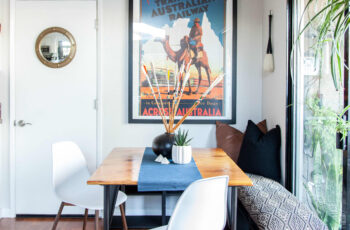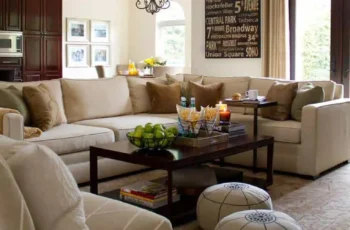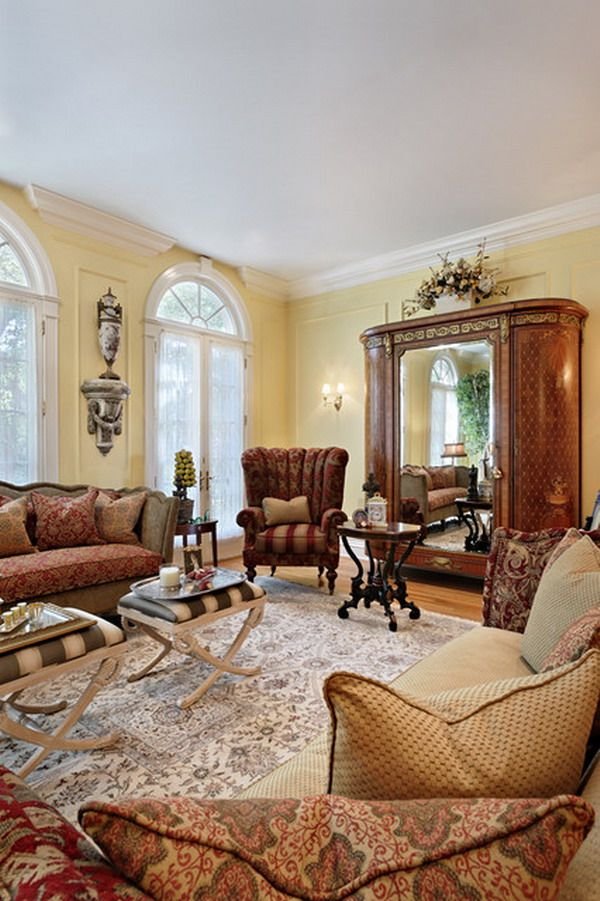
Stepping Back in Time: Crafting a Grand Victorian Living Room Oasis
The Victorian era, spanning Queen Victoria’s reign from 1837 to 1901, was a period of immense change, innovation, and expansion. In design, this manifested as a fascinating blend of the traditional and the new, driven by industrial advancements, colonial influences, and a deep-seated desire for comfort, status, and moral rectitude. The Victorian living room, often referred to as the drawing-room or parlor, was the heart of the home’s public face – a space designed to impress, entertain, and showcase the family’s prosperity and good taste.
Far from the minimalist aesthetics of today, Victorian decor embraced abundance, intricate detail, and a rich tapestry of textures and patterns. It was a style that celebrated collecting, layering, and a "horror vacui" – a fear of empty spaces. Recreating this opulent aesthetic today offers a unique opportunity to infuse your home with warmth, history, and a touch of dramatic grandeur. This comprehensive guide will delve into the essential elements, from foundational choices to the smallest, most impactful details, helping you transform your living room into a truly authentic Victorian sanctuary.
1. The Foundation: Walls, Ceilings, and Floors
The canvas for your Victorian masterpiece begins with the very structure of the room.
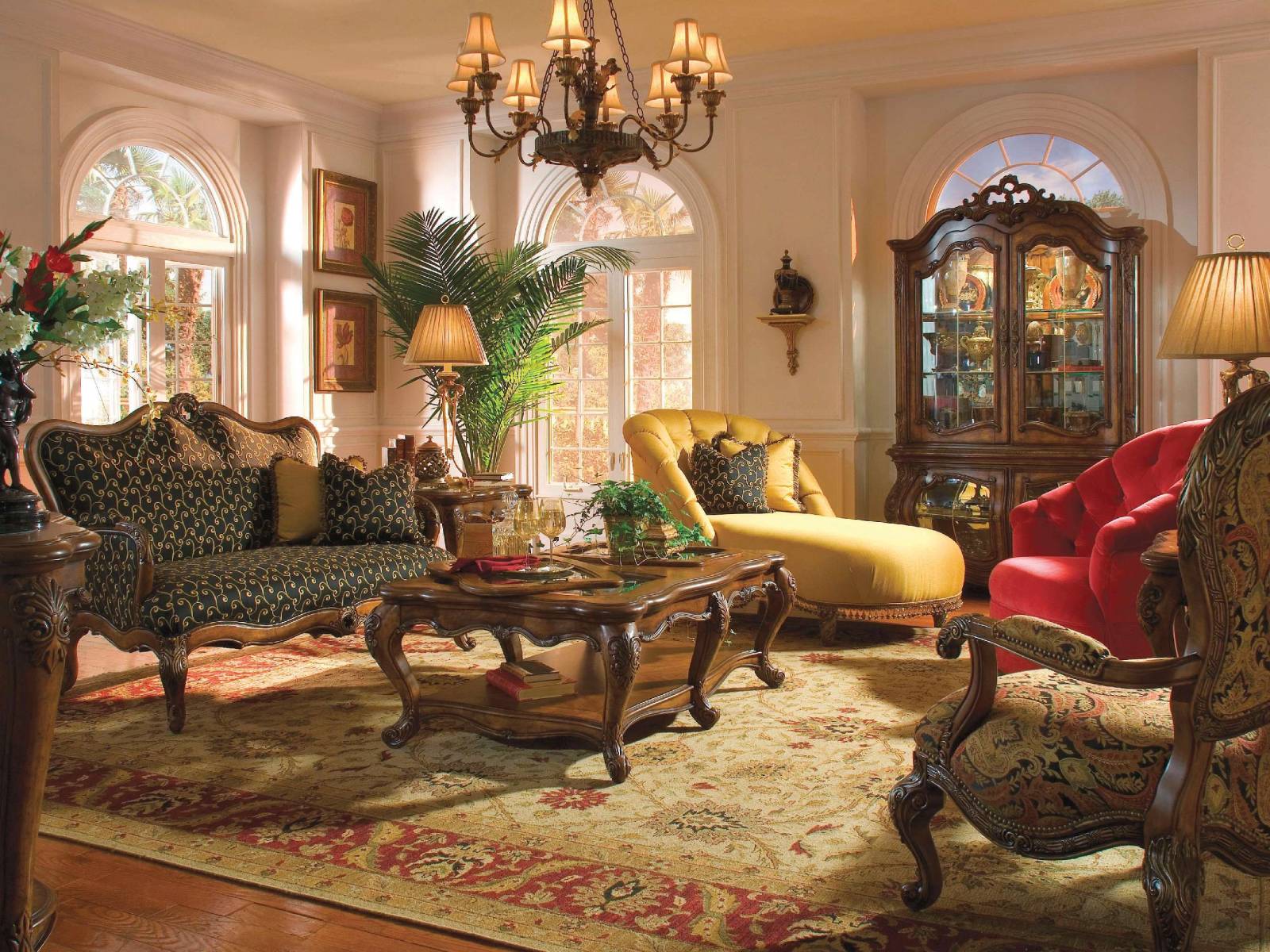
Color Palette: Forget stark whites. Victorian homes reveled in deep, saturated hues. Think rich jewel tones like emerald green, ruby red, sapphire blue, and amethyst purple. These were often balanced with earthy tones such as terracotta, ochre, deep gold, and various shades of brown. For a slightly softer, more late-Victorian aesthetic, consider sage green, dusty rose, or muted teal. The key is depth and warmth.
Walls: Wallpaper was paramount in Victorian interiors, a testament to burgeoning industrial production. Patterns were complex and varied:
- Damask and Brocade: Large, repeating patterns that mimic expensive woven fabrics, often in metallic or flock (raised velvet-like texture) finishes.
- Floral and Botanical: Lush, naturalistic designs featuring roses, lilies, ferns, and exotic plants. William Morris’s iconic designs are a prime example.
- Stripe and Geometric: More subdued patterns, often used as borders or in dado rails.
- Anaglypta or Lincrusta: Embossed, paintable wallpapers that provided textural richness and could mimic carved wood or plasterwork.
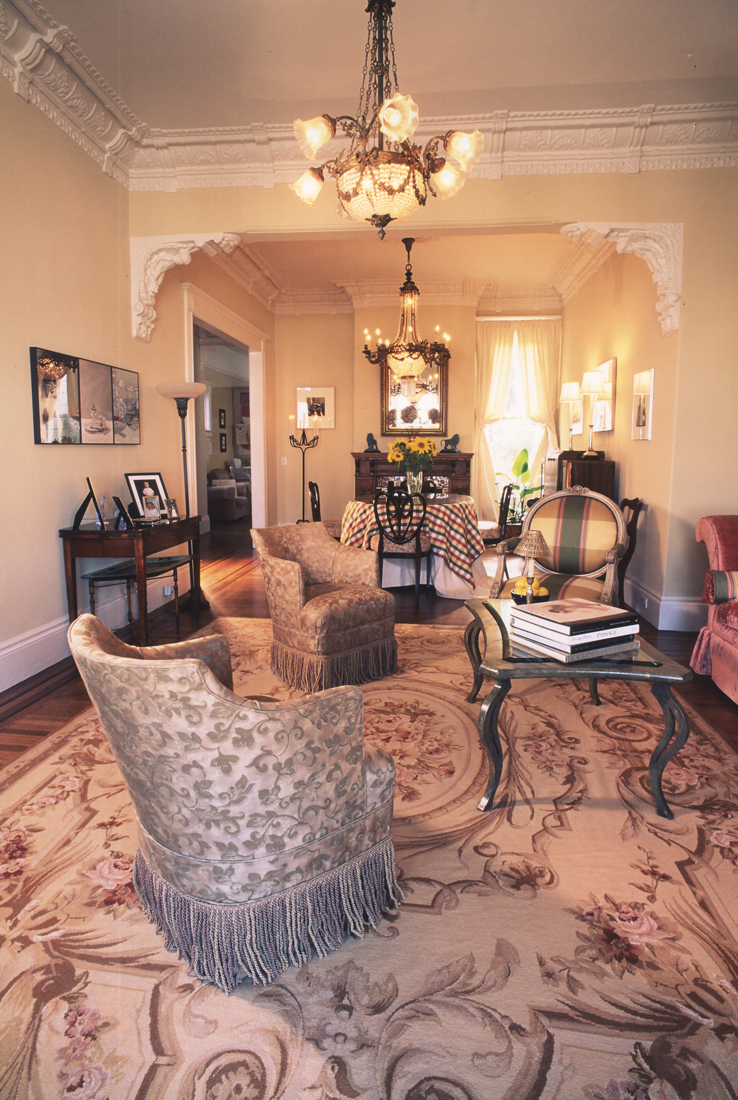
Walls were often divided horizontally by a dado rail (or chair rail) about a third of the way up from the floor, and sometimes a picture rail near the ceiling. The area below the dado rail might be painted a darker color, papered differently, or paneled, while the space above featured the main wallpaper. The frieze (above the picture rail) often had a simpler pattern or complementary color.
Ceilings: Far from being ignored, ceilings were an integral part of the decor. Ornate plasterwork, particularly a central ceiling rose from which a chandelier would hang, was common. Cornices and coving (decorative molding where the wall meets the ceiling) were also elaborately detailed. Ceilings were typically painted in a lighter shade than the walls – often cream, pale blue, or even a soft gold – to reflect light and prevent the room from feeling too heavy.
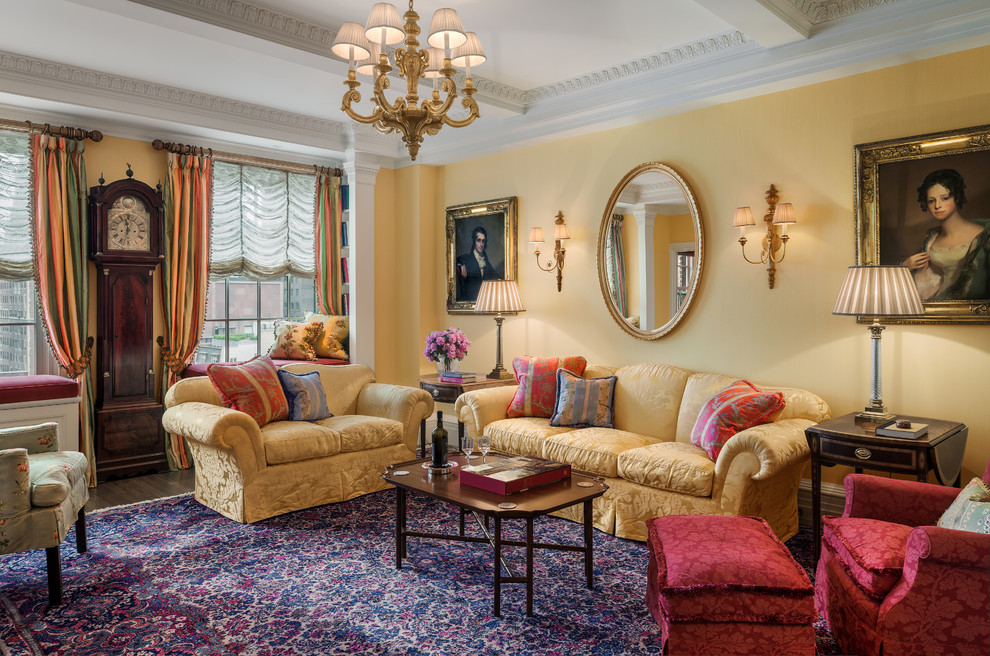
Flooring: Polished hardwood floors, often laid in intricate parquetry patterns, were common, especially in grander homes. However, these were almost always covered, at least in part, by substantial rugs. Oriental or Persian rugs with their complex patterns and rich colors were highly prized, adding warmth, sound absorption, and another layer of visual interest. Layering rugs was not uncommon. For a truly authentic touch, consider a border rug that frames the main seating area.
2. Furnishing the Grand Parlor
Victorian furniture is characterized by its solidity, elaborate carving, and often dark, polished woods like mahogany, walnut, and rosewood. Comfort was a growing priority, leading to generously proportioned, well-padded pieces.
Key Pieces:
- Sofas and Settees: The Chesterfield sofa, with its deep button-tufting and rolled arms, is quintessentially Victorian. Other popular styles included ornate settees with carved wooden frames and richly upholstered seats.
- Armchairs: Comfortable, upholstered armchairs, often in pairs, designed for lounging or conversation. Wingback chairs and balloon-back chairs were popular.
- Display Cabinets and Bookcases: Victorians were avid collectors and readers. Glass-fronted display cabinets (curio cabinets) were essential for showcasing treasured possessions – porcelain, trinkets, travel souvenirs, or scientific curiosities. Tall, dark wood bookcases, filled to the brim, underscored the family’s intellectual pursuits.
- Occasional Tables: Numerous small tables were scattered throughout the room: side tables, coffee tables (though the term was not yet common, low tables for drinks and books served a similar purpose), and ornate carved pedestal tables.
- Ottomans and Footstools: For added comfort and a touch of luxury, often upholstered to match the seating.
- Chaise Longues: For elegant reclining.
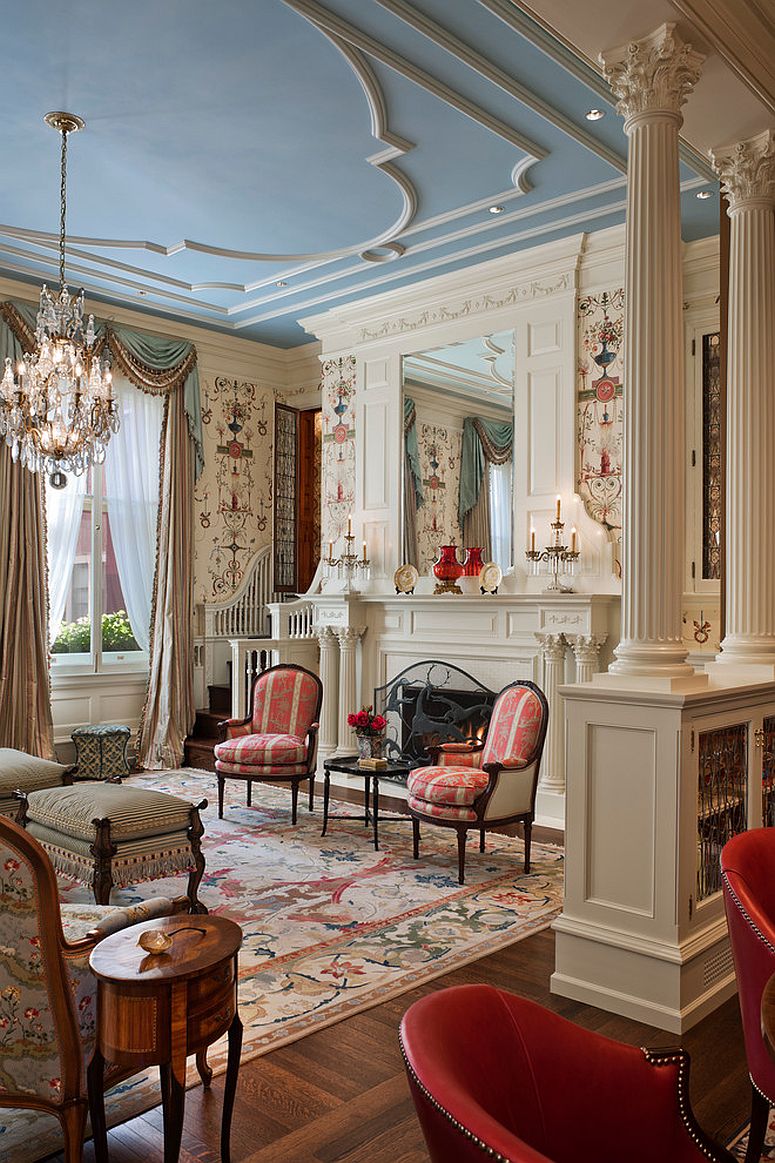
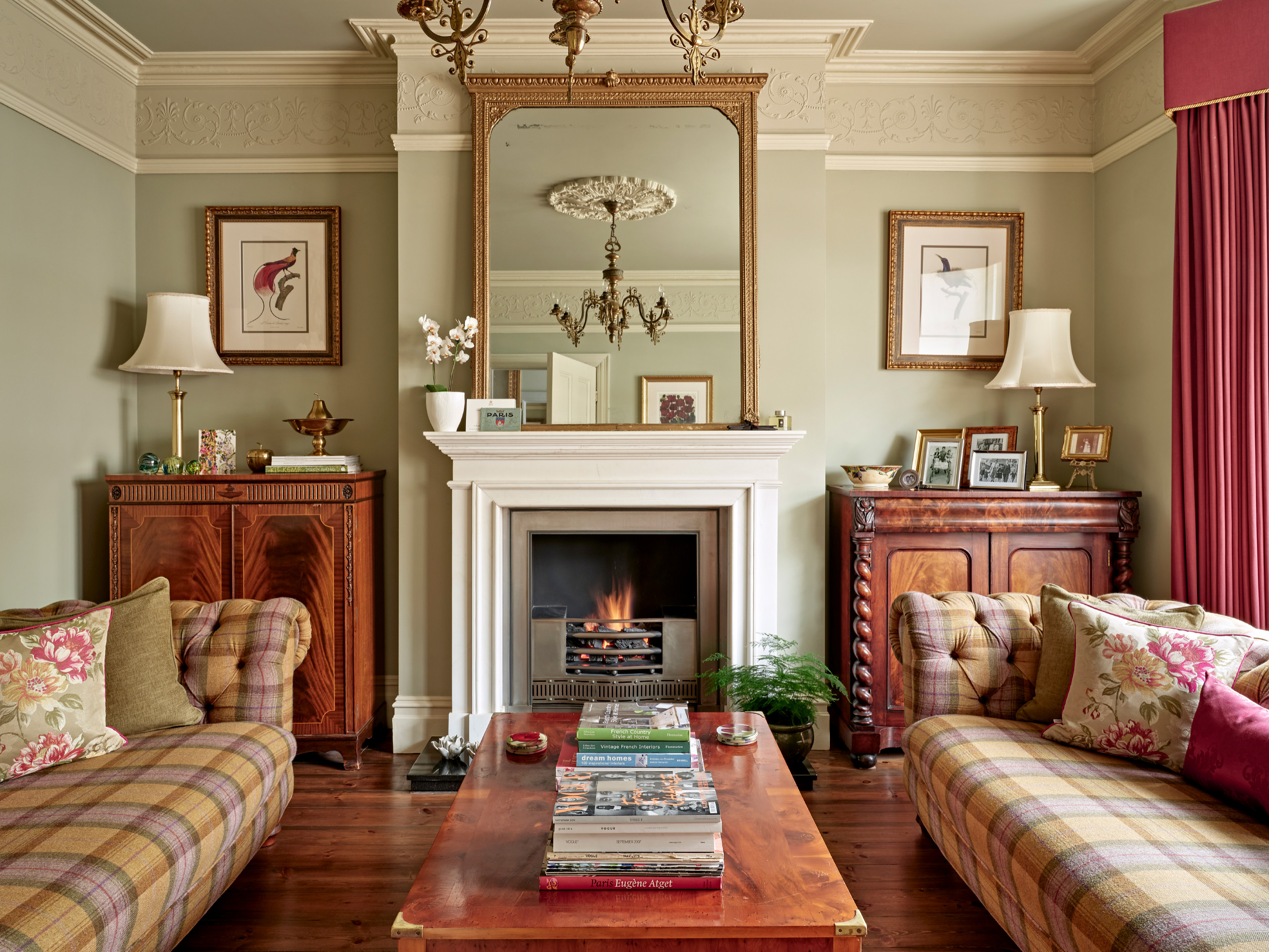
Arrangement: Victorian living rooms were designed for conversation and comfort. Furniture was often arranged in conversational groupings, perhaps around a central fireplace. There was a sense of deliberate fullness, avoiding sparse layouts. Pieces were often pushed closer together than in modern homes, creating intimate nooks.
3. The Power of Textiles
Fabrics are arguably the most defining element of Victorian decor, adding unparalleled richness, warmth, and texture.
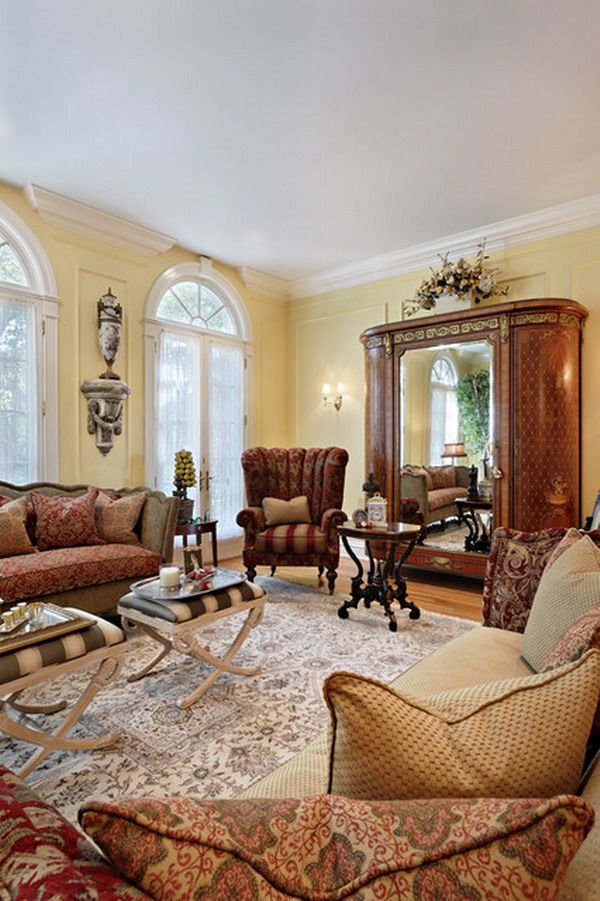
Upholstery: Velvets, brocades, damasks, silks, and heavy woolens were favored. Tufting, button-backs, fringe, tassels, and elaborate braiding were common embellishments. Patterns on upholstery often complemented or contrasted with the wallpaper, creating a layered visual effect rather than a matching one.
Window Treatments: Heavy, elaborate drapery was essential for both aesthetic appeal and practical insulation. Think multiple layers:
- Heavy Curtains: Made from opulent fabrics like velvet or brocade, often lined and interlined for fullness.
- Sheer Under-Curtains: Lace or embroidered sheer panels for privacy while allowing light.
- Pelmet Boxes or Valances: Decorative top treatments, often heavily draped, tasseled, or carved, to conceal curtain rods and add grandeur.
- Swags and Jabots: Decorative fabric elements that draped elegantly across the top of the window.
- Tassels and Tie-Backs: Elaborate, often gilded, to pull curtains back during the day.
Cushions and Throws: Abundant, plump cushions in various shapes and sizes, covered in rich fabrics, adorned sofas and chairs. Throws, often fringed or embroidered, added an extra layer of comfort and visual appeal.
4. Illumination and Atmosphere
Before widespread electricity, Victorian homes relied on gaslight and candlelight, influencing the warm, often diffused glow of the era.
Lighting Fixtures:
- Chandeliers: Ornate, often brass or bronze, with multiple arms for gaslights or candles (later electric bulbs). Glass shades, sometimes etched or frosted, were common.
- Table Lamps: A hallmark of Victorian lighting. Lamps often featured heavy, decorative bases (brass, bronze, ceramic, or cast iron) and elaborate, fringed fabric shades that cast a warm, inviting glow.
- Sconces: Wall-mounted fixtures, often mimicking the style of chandeliers.
- Candelabras: For atmospheric candlelight on mantelpieces or side tables.
Ambiance: The goal was not bright, uniform lighting but rather a series of warm pools of light, creating intimacy and highlighting specific areas or objects. Dimmer switches are invaluable for recreating this effect today.
5. The Art of Accessorizing and Ornamentation
This is where the "horror vacui" truly comes alive. Every surface was an opportunity for display, reflecting the homeowner’s travels, interests, and social standing.
Art and Mirrors:
- Artwork: Framed prints, oil paintings (portraits, landscapes, still life, genre scenes), and watercolors were hung plentifully, often in dark, ornate, gilded frames. A common practice was to hang art edge-to-edge, sometimes even floor to ceiling, in salon style.
- Mirrors: Large, elaborately framed mirrors, often gilded, were used to reflect light and expand the sense of space. They were often placed above the fireplace or on a prominent wall.
Collections and Curiosities: Victorians were avid collectors. Mantelpieces, display cabinets, and occasional tables were laden with:
- Porcelain and Ceramics: Vases, figurines, plates, and decorative dishes from various countries.
- Silver and Brassware: Polished tea sets, trays, candelabras, and decorative objects.
- Travel Souvenirs: Items brought back from grand tours or colonial ventures.
- Botanical and Scientific Specimens: Pressed flowers, taxidermy (less common in living rooms but not unheard of), geological samples, or antique scientific instruments.
- Trinkets and Knick-Knacks: Small decorative items, often sentimental or symbolic.
Books: Books were revered. Living rooms often featured built-in bookshelves or freestanding bookcases overflowing with leather-bound volumes, signifying intellectualism and refinement.
The Fireplace: The fireplace was the undisputed focal point of the Victorian living room. It was typically grand, with a substantial mantelpiece made of marble, slate, or carved wood. The mantelpiece was then used as a display area for clocks, candelabras, vases, and other decorative objects. A decorative fire screen and companion set (tongs, poker, brush) completed the ensemble.
Potted Plants: Bringing nature indoors was popular. Large ferns, palms, and flowering plants in decorative pots added life and freshness to the often-heavy decor. A plant stand or a small table dedicated to a plant was common.
6. Embracing Layering and Abundance
The essence of Victorian decor is its maximalism. It’s about building layers – of color, pattern, texture, and objects – to create a cohesive, rich, and inviting space. Don’t be afraid to mix patterns, as long as there’s a unifying color or theme. Every object tells a story, contributing to the overall narrative of the room and the family living within it. This is not clutter for clutter’s sake, but a deliberate act of curated abundance.
7. Modern Adaptations and Balance
While a full historical recreation might be overwhelming for a contemporary home, you can infuse your living room with Victorian charm without sacrificing modern comfort or light.
- Choose Your Key Elements: You don’t need every single Victorian element. Perhaps focus on a rich color palette, a grand Chesterfield sofa, heavy drapes, and a collection of antique prints.
- Balance Dark with Light: If using deep wall colors, introduce lighter elements through ceiling paint, strategically placed mirrors, or lighter-colored accessories to prevent the room from feeling too heavy.
- Mix and Match: Blend genuine antique pieces with high-quality reproductions. You can even incorporate a few contemporary pieces with clean lines if they don’t clash too heavily with the ornate aesthetic.
- Modern Comforts: Integrate modern lighting (with dimmers!) for practicality, and ensure your upholstered pieces are genuinely comfortable.
- Personalize: The Victorians were masters of personal display. Use your own collections, books, and photographs to make the space uniquely yours, echoing the era’s spirit of curated individuality.
Crafting a Victorian living room is more than just decorating; it’s about curating an experience. It’s a journey back to an era of grandeur, intellectual curiosity, and an unapologetic embrace of beauty and comfort. By understanding these foundational principles and embracing the spirit of abundance, you can create a living space that is not only historically resonant but also deeply personal, warm, and utterly captivating.
Stepping Back in Time: Crafting a Grand Victorian Living Room Oasis | in opo wae, wis opo wae, and on last post i/admin have give some post/articles and many pictures gallery about " The Art of the Bridge: Crafting a Timeless Transitional Living Room" if you have not seen it, please check out before seeing this. (just click text in "anchor text" to read or see last post first), I have packed all images collections become 1 gallery images on post and this time i just want to share again from my collections to could be useful :D. These pictures of Stepping Back in Time: Crafting a Grand Victorian Living Room Oasis, I have collected in a fairly long time, and from various media such as the Internet, books, magazines, newspapers, comics, etc like as from search engine and other sources to be used as ideas for you. and these images has combined into one page on 0 Photos/images Gallery below. lets views.. o[^_^]o.Stepping Back in Time: Crafting a Grand Victorian Living Room Oasis pictures collections gallery
Stepping Back in Time: Crafting a Grand Victorian Living Room Oasis is a nice pictures and stock photo for your computer desktop or your smartphone device (ipad, tablet, blackberry, iphone, and other device) and also for your personal use. Free available for desktop wallpaper or additional image collections for your all needs. And was uploaded by admit at date August 1, 2025. You can download it in your computer by clicking download button to save image... have nice day and have fun guys..
This 1 image in featured post from 0 Photos/images Gallery and awesome picture selections about Stepping Back in Time: Crafting a Grand Victorian Living Room Oasis is available to download. "Download & Save" images/pictures/wallpapers now and this Is one of the post that listed in packed to Category is Living Room Design Ideas directory, with image dimension/resolution size is 600 × 901 px and size image/picture file is 102 KB with original link post ID is : https://powae.pw/stepping-back-in-time-crafting-a-grand-victorian-living-room-oasis/. Get download/save images in post and gallery, "download" images or "preview" it on a bigger image for spesification sample in Large size (full attachment size) here : [Download & View to Large size]. Just Simple way, in thumbnail or in Gallery. *Click images to view Large Size.We collect this wonderful image from online and choose one of the best for you. Pictures collection that posted here was carefully chosen and published by author after choosing the ones which are best among the others. So, ultimately we make it and here these list of best image for your inspiration and informational reason regarding the Stepping Back in Time: Crafting a Grand Victorian Living Room Oasis as part of blogsite exclusive updates collection. So, take your time and find the best informations and pictures posted here that suitable with your needs and use it for your own collection and personal use. About Image information: Image has been submitted and You are able to give your opinion as evaluations to our web site value.
Don't forget to comment if you interest with this images, you can share this post to social media like as facebook, twitter, google+, pinterest, stumbleupon, and more. just click social media buttons for share this post Stepping Back in Time: Crafting a Grand Victorian Living Room Oasis Now. :)
Thanks for your visit, I hope you happy come to opo wae, wis opo wae, and get what you're looking for. And hope sometimes you will come back again here. All you need to do is help us develop by discussing this Stepping Back in Time: Crafting a Grand Victorian Living Room Oasis if you like it "leave your comment". have fun, Thank you.



